Science Animal Adaptations Worksheets
Get ready to dive into the world of animal adaptations with our collection of science worksheets! Whether you're a teacher searching for engaging classroom materials or a parent looking to supplement your child's learning at home, our worksheets cover a wide range of topics relating to animal adaptations. From camouflage and mimicry to physical and behavioral adaptations, these resources provide a fun and educational way to learn about how different animals have evolved to survive in their environments.
Table of Images 👆
More Science Worksheets
6 Grade Science WorksheetsScience Heat Energy Worksheets with Answer
Science Worksheets Light and Sound
1st Grade Life Science Worksheets
7th Grade Science Cells Worksheets
Worksheets Life Science Vocabulary
8th Grade Science Scientific Method Worksheet
Science Worksheets All Cells
5th Grade Science Mixtures and Solutions Worksheets
What is an adaptation?
An adaptation is a trait or characteristic that helps an organism survive and reproduce in its environment. These adaptations can be physical, behavioral, or physiological and have evolved over time through natural selection to increase the organism's chances of survival and reproduction in their specific habitat.
How are physical adaptations different from behavioral adaptations?
Physical adaptations refer to physical characteristics or features of an organism that help it survive in its environment, such as camouflage, protective coloration, or physical structures like a bird's beak or a fish's scales. In contrast, behavioral adaptations are actions or behaviors that an organism exhibits to increase its chances of survival, such as migration, hibernation, or parental care. While physical adaptations involve specific physical traits, behavioral adaptations involve actions or responses that contribute to an organism's survival and reproduction.
Give an example of a physical adaptation in animals.
One example of a physical adaptation in animals is the thick fur of polar bears. This adaptation allows them to stay warm in the cold Arctic environment by providing insulation against the harsh weather conditions.
How do animals use camouflage as an adaptation?
Animals use camouflage as an adaptation to blend in with their surroundings, which helps them avoid predators or sneak up on prey. This can involve having physical characteristics like coloration, patterns, or textures that match their environment, making them harder to spot, or utilizing behaviors that help them conceal themselves, such as staying still or mimicking objects in their surroundings. Overall, camouflage is a crucial survival strategy that many animals have evolved to increase their chances of survival in their often challenging and competitive environments.
What is mimicry and how does it benefit certain animals?
Mimicry is a phenomenon where one species evolves to resemble another species in order to gain a survival advantage. There are two main types of mimicry: Batesian, where a harmless species mimics a harmful species to avoid predation, and Mullerian, where two harmful species evolve similar warning signals for increased deterrence. Mimicry benefits certain animals by providing protection from predators, allowing them to survive and reproduce more successfully due to their deceptive appearance.
Describe how animals use their senses as adaptations.
Animals use their senses as adaptations to survive in their environments by detecting food, predators, and potential mates. For example, animals have developed keen senses of smell to locate food or detect predators, while their acute hearing helps them detect approaching danger. Eyesight is essential for hunting, navigation, and communication, and tactile senses help animals in social interactions and grooming. Overall, animals have evolved their senses to thrive in their habitats and ensure their survival.
How do animals adapt to their environments through diet?
Animals adapt to their environments through their diet by evolving to consume specific types of food available in their habitat. This can involve developing the ability to digest certain plant materials, adjusting their foraging behaviors to find optimal food sources, or developing specialized feeding structures to consume particular prey. Over time, these adaptations help animals maximize their energy intake and overall survival in their specific ecological niche.
Explain how migration is an adaptive behavior for some animals.
Migration is an adaptive behavior for some animals as it allows them to find better resources or suitable habitats in different locations throughout the year. By moving to areas with more food, water, or favorable climate conditions, animals can increase their chances of survival and reproductive success. Additionally, migration can help reduce competition for resources and minimize exposure to predators. This behavior enables animals to adapt to changing environmental conditions and ensures the long-term survival of the species.
Describe how animals use defensive adaptations for protection.
Animals use a variety of defensive adaptations for protection, including camouflage to blend into their environment and avoid predators, physical defenses like spines, shells, or horns to deter attackers, mimicry to imitate harmful species, warning colors to signal danger, and behavioral strategies like playing dead, fleeing, or forming groups for safety in numbers. These adaptations help animals survive in their natural habitats by reducing the likelihood of being targeted by predators or threats.
How do animals adapt to survive in extreme conditions, such as extreme heat or cold?
Animals adapt to survive in extreme conditions by evolving physiological mechanisms or behaviors that enable them to regulate their body temperature, conserve energy, or find shelter. For instance, animals in extreme heat may have specialized cooling mechanisms like panting or seeking shade, while animals in extreme cold may have thick fur or layers of fat for insulation, or migrate to warmer regions. These adaptations help animals maintain their internal balance and increase their chances of survival in challenging environments.
Have something to share?
Who is Worksheeto?
At Worksheeto, we are committed to delivering an extensive and varied portfolio of superior quality worksheets, designed to address the educational demands of students, educators, and parents.

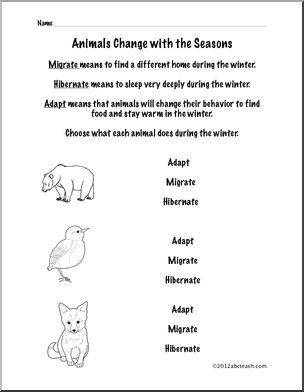



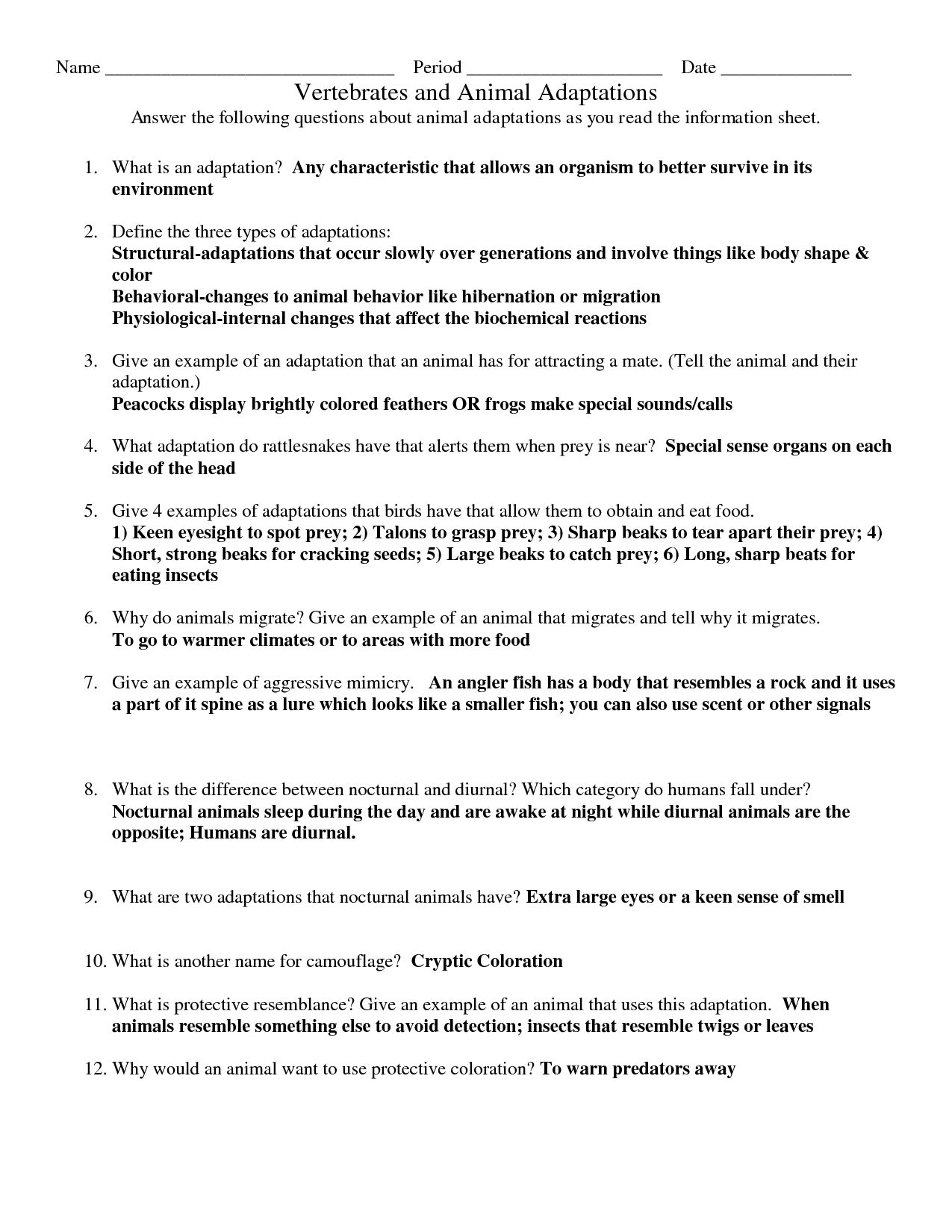
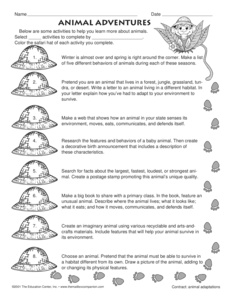
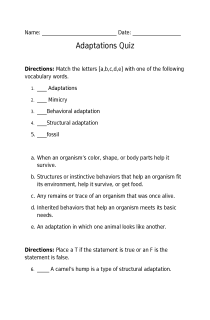
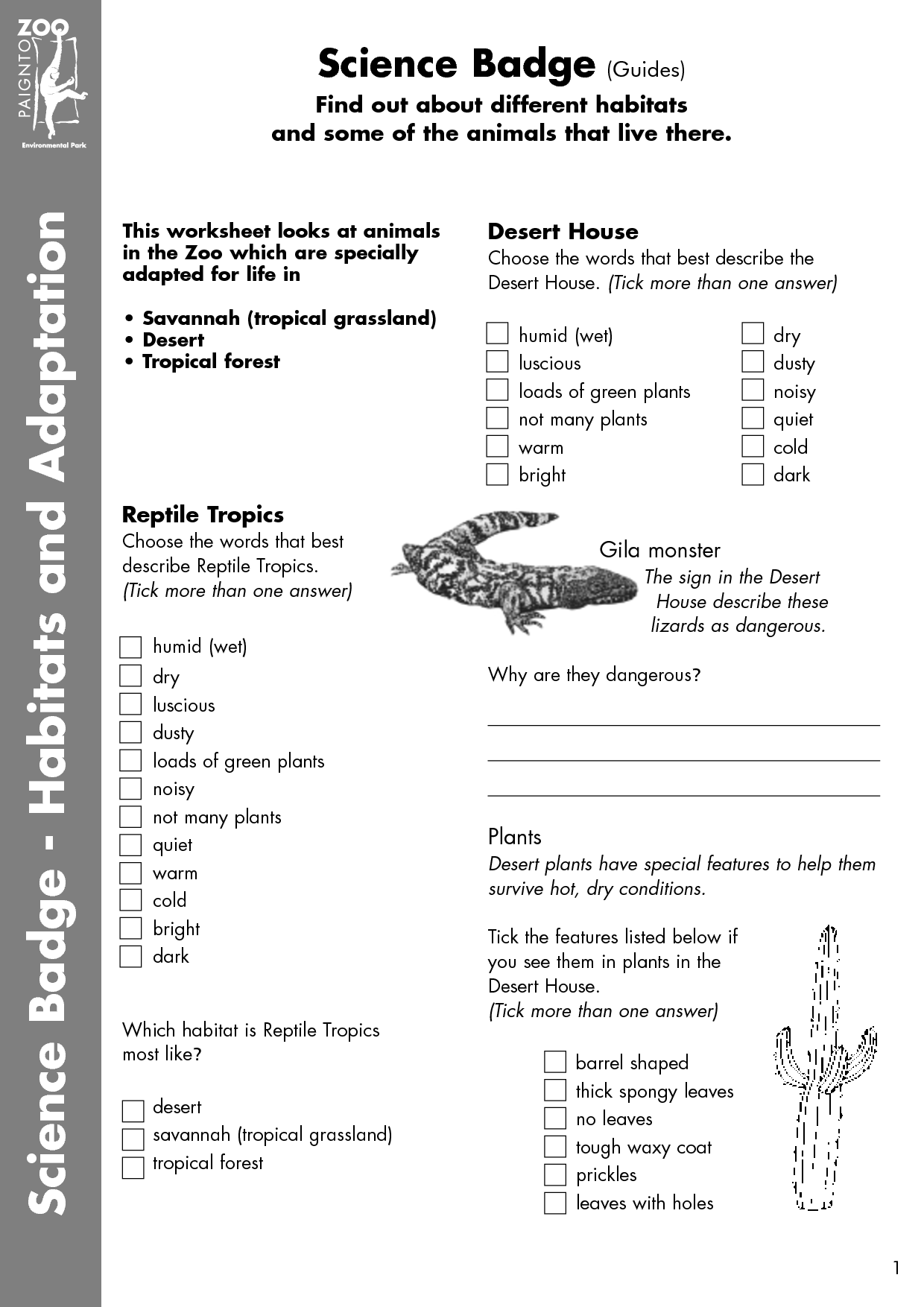














Comments